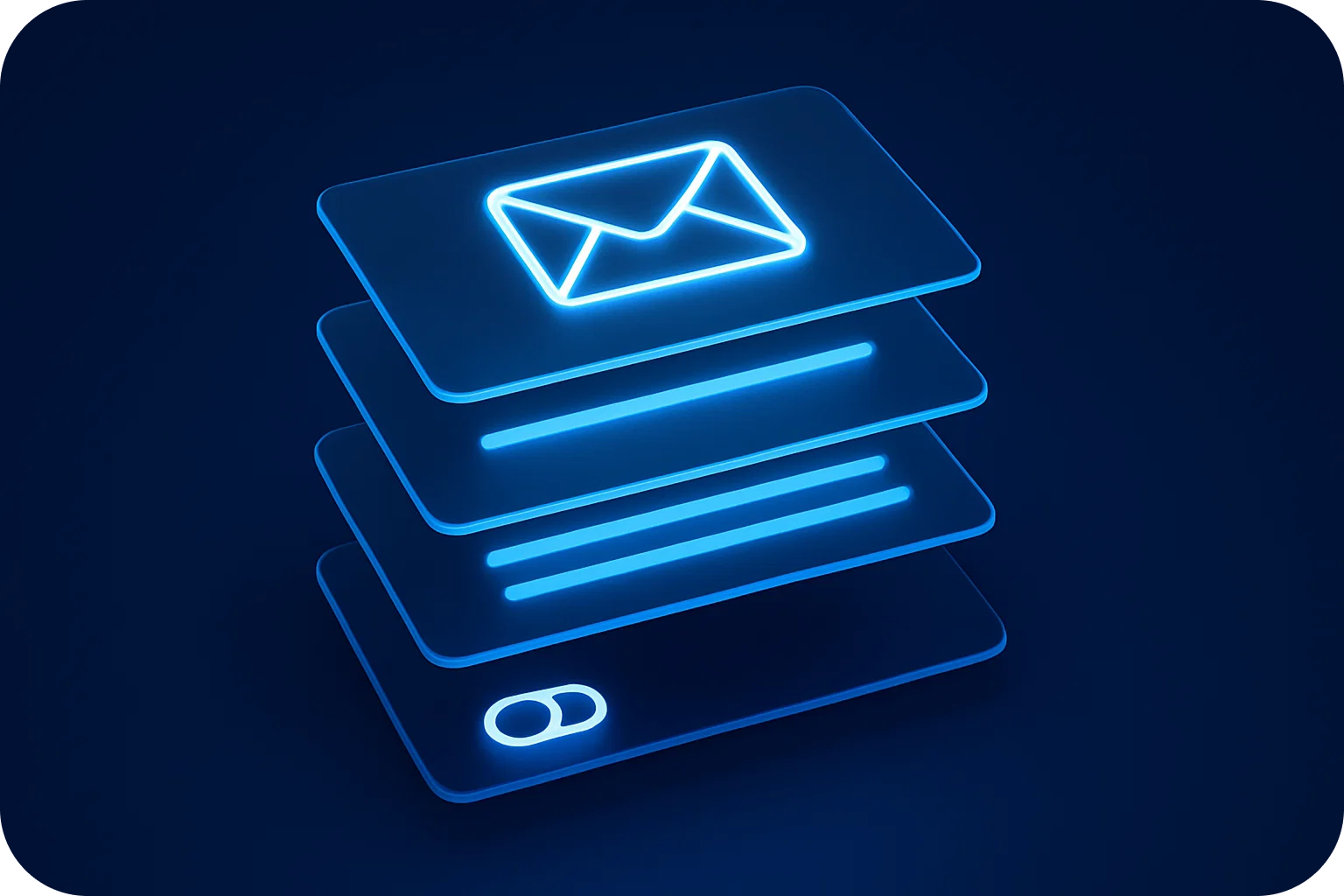Email Deliverability Myths Debunked: 12 'Best Practices' That Actually Hurt You

Cold email has become the backbone of B2B outreach, but misinformation about email deliverability runs rampant. What's worse? Many so-called "best practices" circulating in marketing circles can actively damage your sender reputation and tank your inbox placement rates.
After managing deliverability for over 2,000 active customers sending millions of emails monthly, we've identified the most dangerous myths that could be sabotaging your cold email campaigns right now.
Myth #1: "Send From Your Main Domain"
The Reality: Using your primary business domain for cold outreach is one of the fastest ways to destroy your brand reputation.
When you send high volumes of cold emails from your main domain, you're gambling with your entire digital presence. One spam complaint, one blacklist entry, and suddenly your customer support emails, transactional messages, and internal communications all land in spam.
What Actually Works: Implement a multi-domain infrastructure strategy. Use dedicated sending domains that protect your primary brand while allowing you to scale outreach safely. Most successful cold email operations manage 5-10 domains per account, with 3-5 inboxes per domain.
Myth #2: "More Email Warm-Up = Better Results"
The Reality: Over-warming your inboxes creates unnatural engagement patterns that ISPs can detect.
Email providers like Gmail and Outlook have sophisticated algorithms that recognize artificial warm-up patterns. When your inbox suddenly receives dozens of perfectly-timed, reciprocal emails from other warm-up services, it raises red flags.
What Actually Works: Focus on a gradual, natural warm-up over 3-4 weeks. Start with 5-10 emails daily and increase slowly. More importantly, ensure your warm-up traffic mimics your actual sending patterns in terms of timing, content length, and engagement rates.
Myth #3: "Personalization Tokens Guarantee Deliverability"
The Reality: Poorly implemented personalization can trigger spam filters faster than generic emails.
ISPs have seen every trick in the book. When your email says "Hey {{FirstName}}, I noticed {{CompanyName}} is hiring" but the token fails and displays the actual merge tag, you've just announced you're sending bulk email.
What Actually Works: Use personalization strategically and always have fallback values.
Better yet, focus on genuine research-based personalization that demonstrates real knowledge about the recipient's business, not just mail-merged fields.
Myth #4: "Avoid Spam Words at All Costs"
The Reality: Modern spam filters don't work with simple keyword blacklists anymore.
Words like "free," "guarantee," or "limited time" won't automatically send you to spam in 2025. ISPs use machine learning models that analyze hundreds of factors including sender reputation, engagement history, authentication protocols, and content context.
What Actually Works: Write naturally for your audience. If your offer genuinely includes something free or guaranteed, say so. Focus instead on building strong sender reputation through proper infrastructure, authentication, and engagement.
Myth #5: "Higher Email Volume Means More Leads"
The Reality: Sending maximum volume without regard for engagement destroys deliverability.
The recommended maximum is 100 emails per inbox per day, but the optimal number is closer to 20. Why? Because ISPs measure engagement rates. If you send 100 emails and get 2% engagement, that's worse than sending 20 emails with 10% engagement.
What Actually Works: Prioritize quality over quantity. Segment your lists aggressively, craft compelling copy, and target prospects who actually match your ideal customer profile. Scale through multiple inboxes and domains, not by maxing out individual accounts.
Myth #6: "Purchased Email Lists Are Fine If You Warm Up First"
The Reality: No amount of warm-up can save you from sending to unverified, uninterested recipients.
Purchased lists typically contain outdated addresses, spam traps, and people who never expressed interest in your category. Your bounce rates will spike, spam complaints will roll in, and your sender reputation will crater within days.
What Actually Works: Build your own lists through legitimate lead generation. Use LinkedIn outreach, content marketing, and verified databases. The time investment pays off through dramatically higher engagement and sustainable deliverability.
Myth #7: "Image-Heavy Emails Look More Professional"
The Reality: Heavy images trigger spam filters and hurt deliverability across all major providers.
ISPs can't read images, which means they can't verify your content isn't malicious. Additionally, many recipients have images blocked by default, leaving them with a blank email. The text-to-image ratio is a significant ranking factor for inbox placement.
What Actually Works: Stick to plain text or minimal HTML. If you must include images, keep them small, use alt text, and ensure your message makes sense even if images don't load. The 98% deliverability rates come from simple, text-focused emails.
Myth #8: "Unsubscribe Links Are Only for Marketing Emails"
The Reality: Not including an unsubscribe option in cold emails increases spam complaints exponentially.
When recipients can't easily opt out, they mark you as spam instead. Each spam complaint damages your sender reputation across all your domains and can trigger blacklisting.
What Actually Works: Always include a clear, functional unsubscribe mechanism. Yes, even in cold emails. It demonstrates professionalism, builds trust, and protects your infrastructure. The few unsubscribes you get are far less damaging than spam complaints.
Myth #9: "Sending at Optimal Times Guarantees Opens"
The Reality: Optimal send times vary dramatically by industry, role, and individual behavior.
The "Tuesday at 10 AM" advice ignores that your prospects might be in different time zones, have different work schedules, or check email at unconventional times. Additionally, when everyone sends at the "optimal" time, inboxes get flooded and your email gets buried.
What Actually Works: Test different send times with your specific audience. Consider spreading sends throughout the day to avoid inbox congestion. More importantly, focus on compelling subject lines and preview text that drive opens regardless of timing.
Myth #10: "Shared IP Addresses Are Always Bad"
The Reality: Shared IPs can actually provide better deliverability for low-volume senders.
Dedicated IPs require significant sending volume to build a reputation. If you're sending fewer than 100,000 emails monthly, a dedicated IP might sit cold, making ISPs suspicious. Shared IPs with good reputation management can provide immediate deliverability benefits.
What Actually Works: Choose based on your volume and needs. Shared IPs work well for most businesses starting with cold email. Dedicated IPs make sense when you're sending high volumes and want complete control over your reputation.
Myth #11: "SPF, DKIM, and DMARC Are Optional"
The Reality: Missing authentication protocols in 2025 means your emails won't even reach the inbox.
Major email providers now require proper authentication. Without SPF, DKIM, and DMARC configured correctly, your emails are either rejected outright or automatically filtered to spam. This isn't optional anymore—it's table stakes.
What Actually Works: Implement all three authentication protocols correctly. Use DMARC policies that protect your domain from spoofing while allowing legitimate sends. Automated deliverability setup ensures these technical requirements are handled properly from day one.
Myth #12: "Once Blacklisted, You're Done"
The Reality: Most blacklists are temporary and can be resolved with proper remediation.
Getting blacklisted feels catastrophic, but most listings are automatic and can be removed once you've fixed the underlying issue. The key is catching problems early and having infrastructure that isolates issues to specific domains rather than your entire operation.
What Actually Works: Monitor your sender reputation across all major blacklists. When issues arise, identify the root cause (usually list quality or volume spike), fix it, and request delisting. Having multiple domains means one blacklist doesn't shut down your entire operation.
The Truth About Email Deliverability
Real email deliverability isn't about following a checklist of "best practices"—it's about understanding how ISPs evaluate sender reputation and building infrastructure that supports sustainable, scalable outreach.
The companies achieving 96-98% inbox placement rates aren't using tricks or hacks. They're implementing proper infrastructure with multiple domains, authenticated sending, gradual scaling, and engagement-focused strategies.
Key Takeaways:
- Protect your primary domain by using dedicated sending domains
- Focus on engagement quality over sending quantity
- Implement proper authentication (SPF, DKIM, DMARC) as non-negotiable
- Build your own verified lists instead of purchasing
- Monitor reputation and isolate issues through multi-domain infrastructure
- Test and optimize based on your specific audience, not generic advice
The difference between emails that land in the inbox and those that disappear into spam often comes down to infrastructure. When you're managing 5-10 domains per account with proper authentication, gradual warm-up, and volume controls, you're building a foundation for sustainable cold email success.
Stop following outdated advice that damages your sender reputation. Start implementing infrastructure and strategies that actually work in 2025's email landscape.
More articles
Get started now




%201.png)





